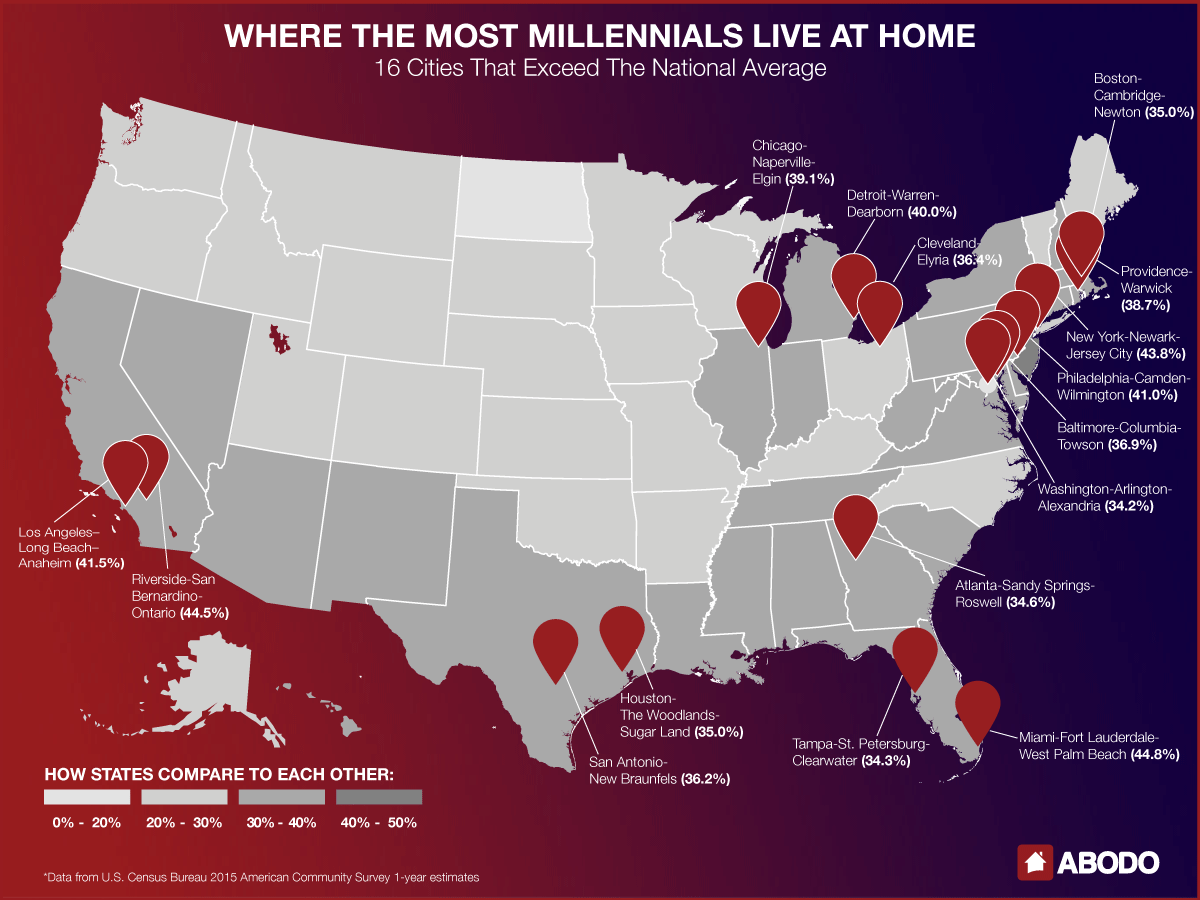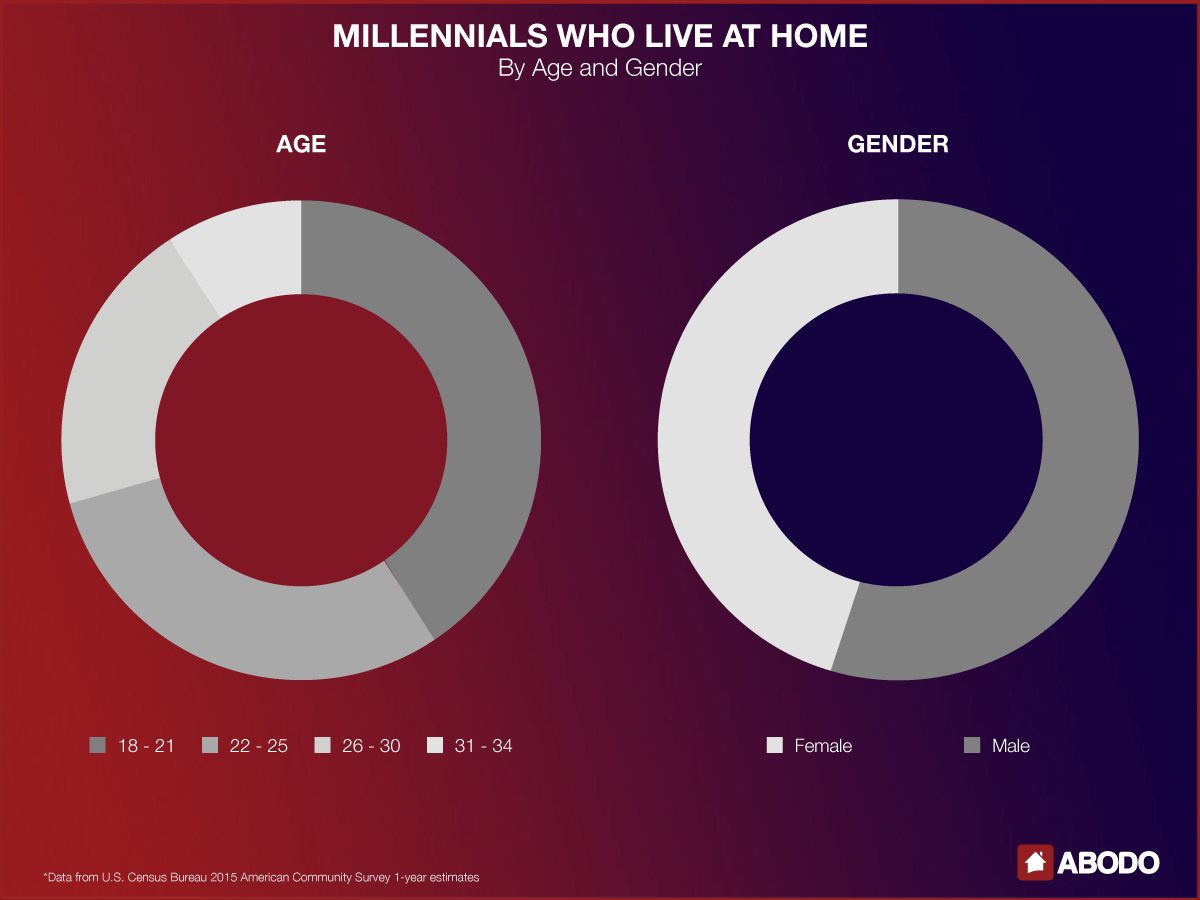Student debt, housing affordability and income are commonly tossed out as the culprits behind Millennials needing to move back in with their parents. The details, however, expand a lot farther than there, as a new report from ABODO, an apartment hunting website, unravels after analyzing data from the U.S. Census Bureau.
Starting with the basics, ABODO points out that Millennials are the largest generation in the U.S., making up about one-third of the population. Plus, they are now the most diverse generation and most educated generation.
Yet, on the other hand, this same generation is more often found living with their parents than on their own.
According to the data, approximately 34.1% of all Millennials in the U.S. have yet to move out.
ABODO decided to break down the cities with the highest percentage of Millennials living at home, along with why this is happening.
Here are the four charts they came up with as a result.
This first chart looks at the MSAs with the most Millennials staying home, with Miami-Fort Lauderdale-West Palm Beach, Florida jumping out in the No. 1 spot. In this area, there are a whopping 44.8% of 18- to 34-year-olds live who with their parents.
And a quick glance of the chart also shows there are some state represented twice, such as California and Texas.
Click to enlarge
(Source: ABODO)
This next chart is handy since it breaks down the average age and gender of Millennials living at home. After all, technically 18-year-olds and 19-year-olds are Millennials, and it’s not too alarming to see them living at home.
However, what is noteworthy is that 30% of Millennials at home are 26 or older.
Click to enlarge
(Source: ABODO)
From here, ABODO factors in the impact of a college education, which is a little complicated.
The report joked that the popular narrative of Millennials moving back in with their parents after majoring in English might be also slightly overstated since only 12% of Millennials living at home listed a bachelor’s degree as the pinnacle of their education, though 18% of Millennials as a whole stopped after their four-year degree.
Click to enlarge
(Source: ABODO)
This final chart breaks down the 16 MSAs ABODO examined even further, spotlighting the average rent in each area versus the average income.
The reported noted that the U.S. government defines a cost-burdened renter as someone who spends more than 30% of his or her income on rent.
This chart puts into perspective exactly how expensive the 16 MSAs are for Millennials.
Click to enlarge
(Source: ABODO)
The report concludes that the problem isn’t just high rent, lack of education, unemployment or low pay. Often, it’s a combination. The four charts above help highlight the pain points for why Millennials have to live at home and what those Millennials look like.







